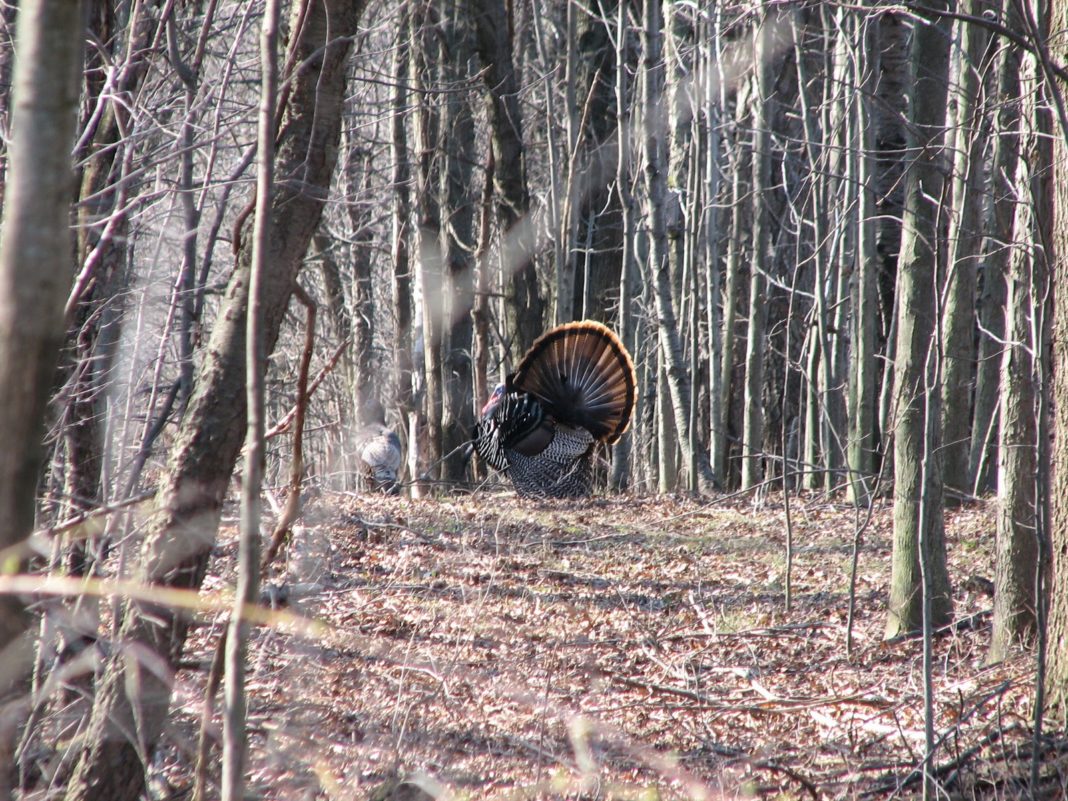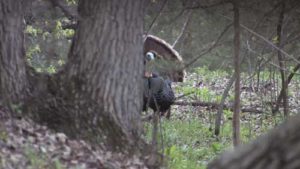There is an old-fabled story of a gobbler just 80 yards away that wouldn’t budge, walking away gobbling as if it were taunting the hunter. Unfortunately, I’m sure a lot of turkey hunters know this story to all too well; we have all left the woods talking to ourselves after such an encounter, and here are some tips to help seal the deal on those reluctant spring gobblers.
Create a Game Plan
The beginning of a successful hunt starts several weeks before Turkey season ever opens. You have to be out there scouting and compiling valuable MRI (Most Recent Information) as to where you are seeing turkeys through the entire day when scouting. Try to get out in the morning and listen for Gobblers sounding off of the roost also, with your binoculars or spotting scope, scout the fields where they gather. If you are hunting the big hard woods, you should walk the hardwood ridges looking for the beech and oak trees they love to roost in. This is where you will find turkey scratchings, feathers dust bowls and droppings. These are prime off the roost hunt locations and mid-day areas to try an entice a gobbler to investigate some light calling on and off. Try to find where the turkeys are entering and leaving a field in the morning and again in the late afternoon. The most important day of scouting should be the day before your hunt.
Calling is one of the keys to success when spring turkey hunting. If you have done your scouting and planning and know where the turkeys spent the night and how they will use the property in the morning, get in there in the dark and set up around 100 yards away being careful not to bump any birds off of the roost. Normally begin with a few soft tree yelps and a few purrs to let the tom know there is a hen on the roost. When he answers you do not call again while he is on the roost. He knows where you are. Once he flies down try and mimic how his hens call. Soft, aggressive or sometimes no calling at all is the key for him to come investigating. When a tom approaches the place he thinks he heard a hen call from, he fully expects to see her there, and looks for signs of responsiveness. If he doesn’t see the hen, he hangs up waiting for her to show herself. (Keep in mind you are trying to reverse how nature works). Keep the Gobbler interested and approaching by choosing your set-up carefully. Use wrinkles in the terrain to find a spot he can’t see until he’s within your shooting range. If you set up poorly and he hangs up in sight, quit calling, let him walk and try again from a better location.
The best advice I would give to a hunter having a tough time with an old or stubborn hung up gobbler is to call soft seldom and be very patient. Sometimes you’ve got to just hang in there and sit and watch, and just scratch the leaves or soft purr every 10 to 20 minutes. And wait an entire morning for that tom to revisit your set up. Even then, the gobbler may choose not do what you want him to do. Put in the time, watch, wait, learn that bird. Slip out and come back that afternoon, or the next morning. With turkeys it’s often a tight chess match, and you’ve got to make all the right moves slowly, patiently and perfectly, or you’re not going to take down that ol’ long beard. And that really is what makes Spring Turkey Hunting so special. It’s never easy. When success is met in the spring woods it becomes a ritual to be cherished.
Call Like a Turkey
- Use soft clucking sounds. A cluck is a turkey’s way of getting another turkey’s attention. Hens cluck to let a tom know they’re waiting for him.
- Purring is a soft and contented sound that hens make when all is well with their world.
- Do not make turkey putt sounds. A turkey putt is an alarm call, consisting of several quick notes. It signals danger to the other birds.
- A hen’s yelp means just about the same thing, but it can have other meanings during the breeding season.
- Cutting is a sign that turkeys are excited, not alarmed. Loud, sharp clucks that are often mixed with yelping. Cutting has several uses in hunting. If a gobbler is henned up, and one of the hens is cutting, you can cut back in an attempt to bring her to you with gobblers in tow.
The predictable patterns that turkeys stick to just prior to opening day are a far better indicator of what they will likely be doing opening morning compared to your scouting trip a month or so ago. When you can begin to piece together your scouting information from various trips and mimic what his hens sound like in the area, then you will be on you way to becoming a Turkey Closer in the Spring Turkey Woods.









![The Best Deer Camp Chili [VIDEO] Deer Chili Ingredients, Tomatoes, Chili Spices](/wp-content/uploads/2015/10/Deer-Chili-Deer-Camp-Recipe-218x150.jpg)








![How to Call Elk Early in the Season [VIDEO]](/wp-content/uploads/2016/08/byers003-218x150.jpg)





![Idiots Disturb Hunter: How Would You Have Handled It? [VIDEO]](/wp-content/uploads/2015/10/DSC00110-e1474487693878-100x70.jpg)
![Albino Buck Shocked to Shed His Antlers [VIDEO]](/wp-content/uploads/2015/10/AlbinoDeer-100x70.jpg)